Interested in animal studies but not so much in taxonomy? It is helpful to know the taxonomy of different creatures and how they relate to other animals but sometimes you want to get past the taxonomy and actually get to what makes the animal so interesting. If your teen has already done Biology, they are familiar with the classification charts so we spend only a little bit on classification of animals in these animal studies.
To create an animal study unit, I first asked my teen what animals she wanted to know more about. She definitely had a list of animals– some well known, a few endangered, several unusual and unfamiliar. If she didn’t quite know what was out there, we scoured a few “unusual” animal videos by National Geographic to get an idea of animals we had never even heard of and added any that peaked her interest onto the list.
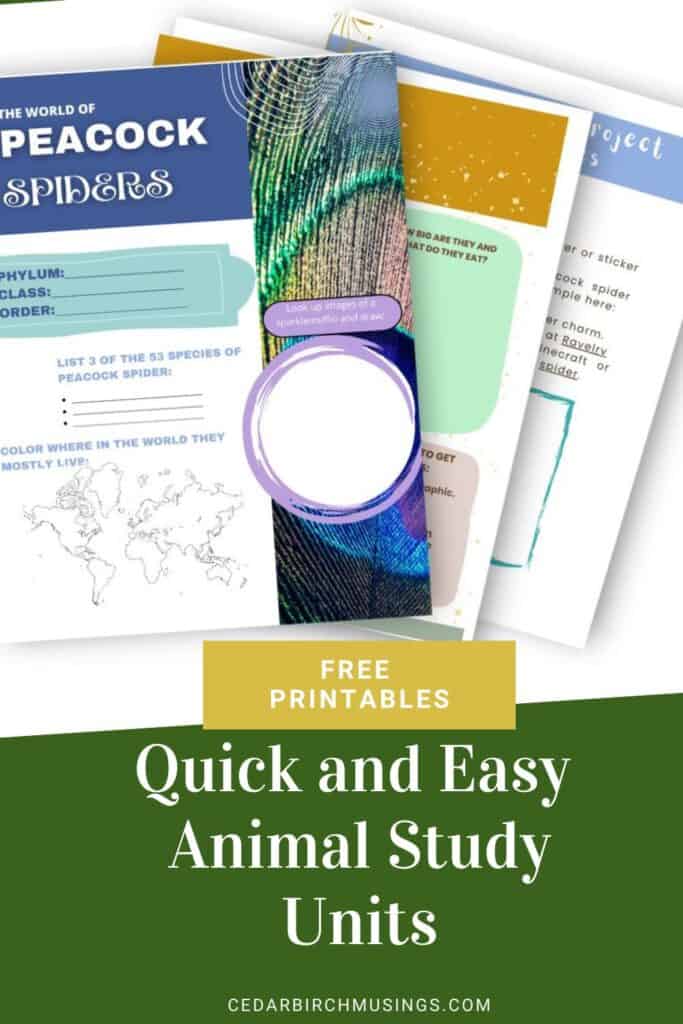
Taking the master list of animals of interest, I scoured for interesting articles of fun facts for each animal, documentary links, books, and handicrafts or hands-on activities for each. As the list of resources were found, we put them into a reference quicklinks page and a pdf of questions for her to fill out and collect into a binder of short animal highlight sheets.
Of course, many of these animals are not anywhere in our vicinity or even remotely accessible so a handicraft would stand in for letting the information “percolate” in the mind as the hands worked on a related project. If there was a hands-on activity like dissecting an owl pellet from a kit we for sure got those ordered and on the way.
These articles are appropriate for the independent upper elementary, middle school, and up through high school but there are many articles just as great out there for youngsters if they are joining in. These units are simple and easily done. While there is mention of evolution and it’s timeline in many of the article listed, that is something we ignored and skipped over. We were mainly looking for characteristics of the animal itself.
Want an animal mini-unit with answer key?
Head on over to our Etsy Shop for our inexpensive animal study units with the student worksheet, ideas and resources link page, and answer key.
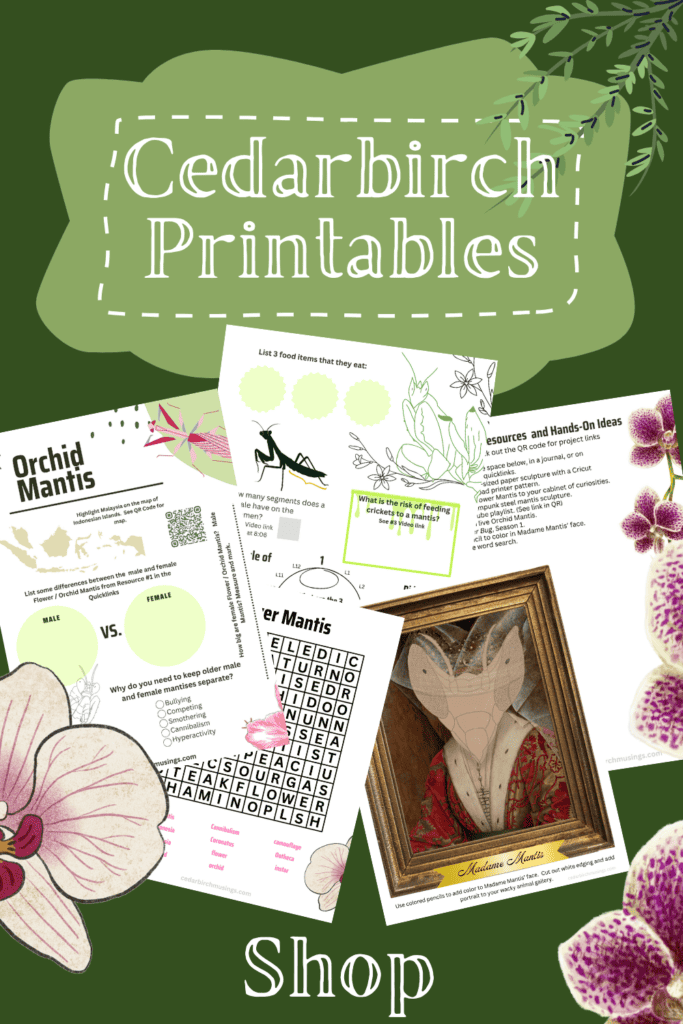
Below are a few of the short student pdf’s that we have used this year that you can download and enjoy. Just click on the subscribe button at the bottom of the article and all of the units will be available to you. Use one or all as you have need.
This post contains Amazon affiliate links, which means I receive a small commission, at no extra cost to you, if you make a purchase using links provided. Please see my disclosure page for more details.
Animal Study Units
Basic Classification Characteristics
If your teen has used the high school Apologia Biology curriculum, your teen is very versed in classification and terms. To begin our animal studies however, we just needed a simple refresher to help get a broad picture on where our animals on the list were in relation. The characteristics can be found in the book Cabinet of Curiosities by Gordon Grice. I highly recommend this book for your collection. It inspired us to make our own curiosity cabinet for our wall. This is just one sheet to put at the beginning of you animal study binder.

Peacock Spiders
We had never heard of the group of spiders called Peacock Spiders. One in particular stood out in the list of this unusual arachnid: the Sparklemuffin. I thought someone was making a joke with this name but no, it is a real thing! It is actually quite cute and is probably the ONLY spider I would be interested to learn about with my teen. Are you curious? Now you need to look it up because it is really is just too cute.
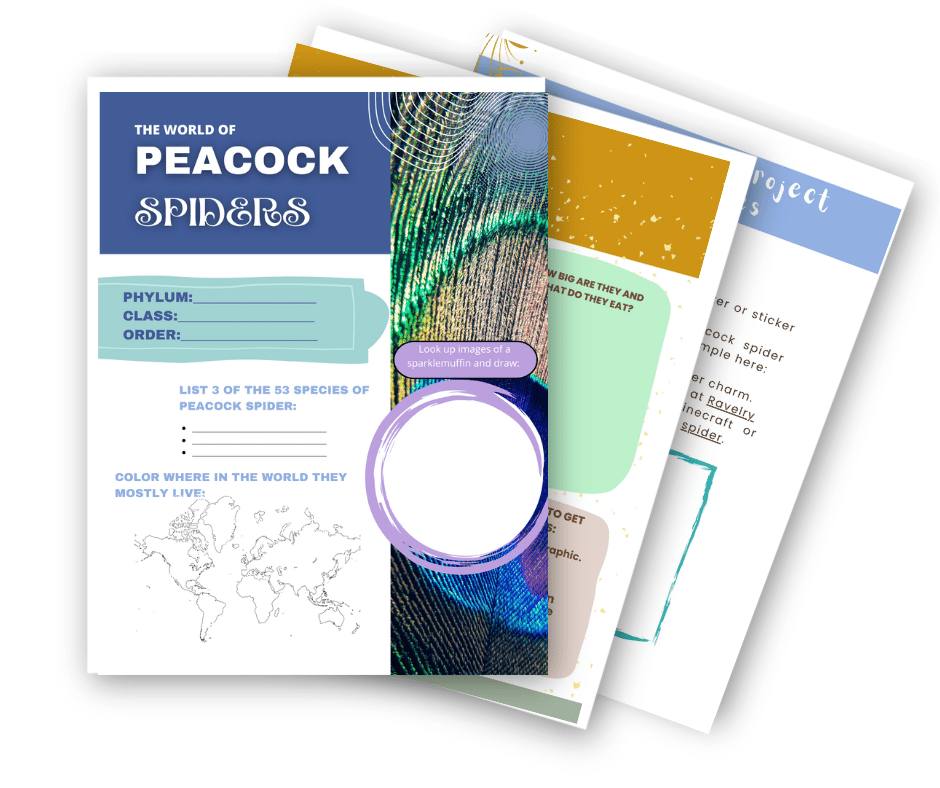
Miniature Deer
There really are deer with long tusk-like fangs sticking out of their mouths. At first the pictures looked like someone photoshopped fangs onto a poor cute little deer. It belongs to a whole group of miniature deer along with several other types of miniature deer.

Okapi
This animal looks like a mixture of horse and giraffe. With it’s long tongue and silky coat, it’s an elusive jungle animal in the Congo rainforest. I had never even heard of this animal before and love its lovely striped legs.
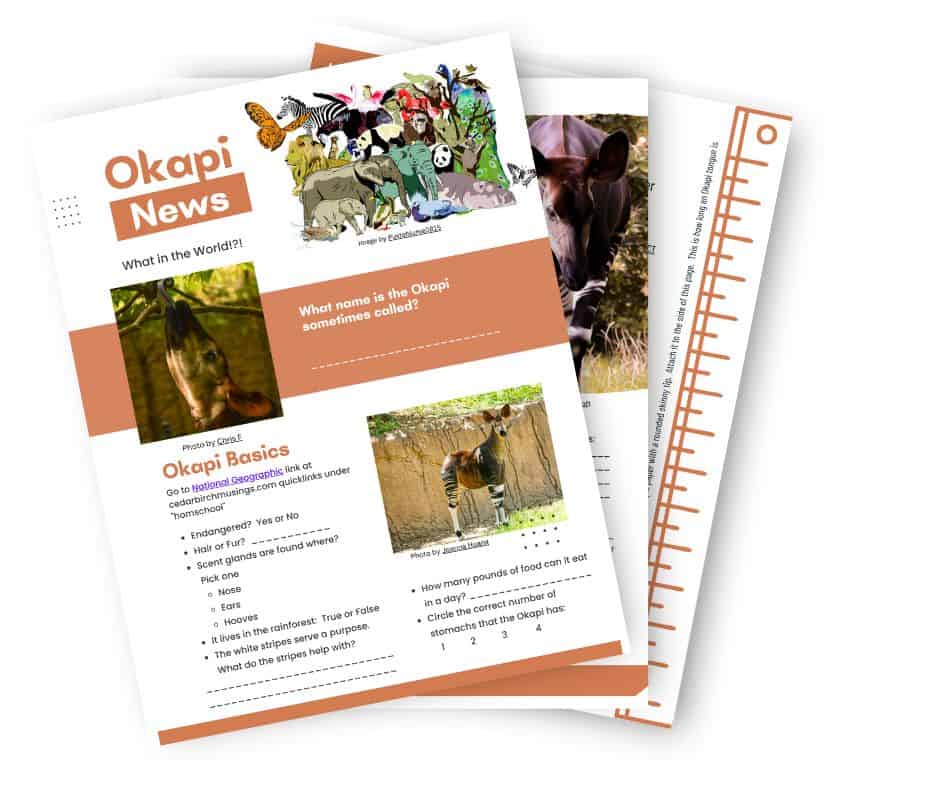
Red Panda
Oh man, these cuddlies are too cute! I think they are now my favorite animal. Having never looked these cuties up, I learned a lot about them. Have you ever scene them cat play wrestle in the forest? So adorable. Did you know that Master Shifu in Kung Fu Panda is a Red Panda?

Tawny Frogmouth
With their strangely huge light green mouth, these little guys are covered in intricately patterned feathers and hard to see in the trees. The babies are adorable fluff balls!
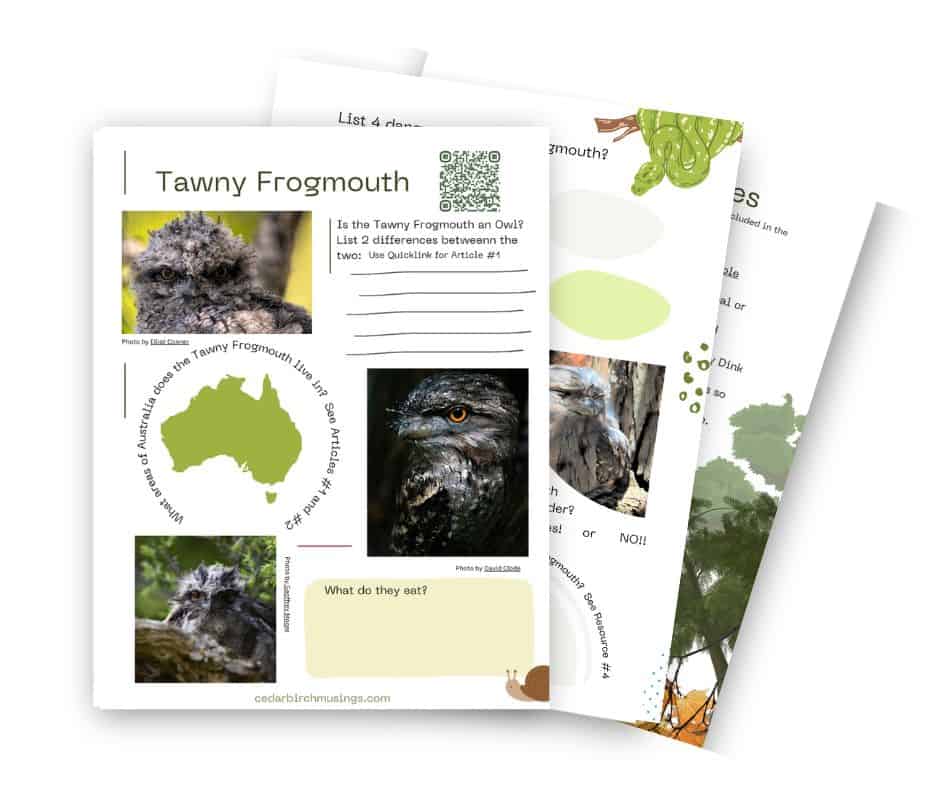
Orchid Mantis
These little ones are lovely and bizarre at the same time. Making weird and fascinating pets, the Orchid Mantis is a unique option. I am not sure what to think about that, we have a rule in our house: “no pets that we would freak out if they escaped their cage.”

Kangaroo Rat
If you’ve seen these little cuties encountering a rattlesnake, its an awesome site how they can spring load and jump from their feet. Gives me the creeps at close it comes sometimes though!

Yes, I want to try these animal study units out:
Creating your own
Once you have your list, just keep going with the simple format of linking a few great websites, asking some questions, looking for handicrafts or experiment kits. Put it together in a document such as Word, Powerpoint, or other graphic design program. You can gear your animal highlights for the age child you are making these for. Now all you need to do is ask your child what animals? You may be surprised at which ones land on their list.


